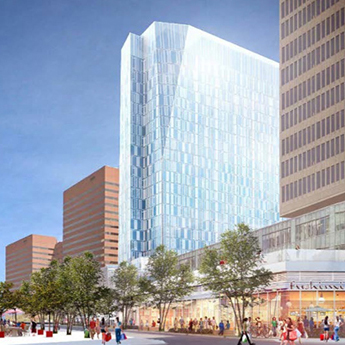The Transformation of Kendall Square: The Past, Present, and Future of MIT’s Neighborhood
-
-
slice.mit.edu
- 2
Filed Under
Recommended
Kendall Square, 2014. Images via MIT Technology Review.
Over the past century, Kendall Square—the loosely defined neighborhood around MIT campus—has undergone more than one transformation. Originally a salt marsh on the Charles River, in became a major industrial center in the early 1900s that was home to plants, factories, and even a carcass-disposal shop for Boston’s stockyards.
Later, when the factories closed, Kendall Square was deserted—blocks of empty buildings encompassed MIT. But slowly, over decades, many MIT-connected entrepreneurs would reinvent the neighborhood, first building biotech and IT companies then attracting companies like Microsoft, Google, and Facebook. In 2009, the Boston Consulting Group called the neighborhood “the most innovative square mile on earth.”
The Past and Future of Kendall Square: A Transformation in Five Acts,” MIT Technology Review
Now MIT is poised to complete the transformation with a massive project to build six buildings with space for research and development facilities, offices, residences, restaurants, and shops. “We want to create a vibrant, exciting sense of place,” says MIT provost Martin Schmidt, SM ’83, PhD ’88.
The September/October 2015 issue of MIT Technology Review highlights the neighborhood’s rise from industrial to innovation. Our favorite anecdotes are below. Read the full long-form piece in MIT Technology Review online.

Act One: Kendall, We Have a Problem
“In the mid-1960s, NASA announced plans to site its Electronics Research Center, with a proposed staff of 3,000, on land abutting MIT.
Just a few years into the development, however, in 1969, President Richard Nixon abruptly ordered the new facility closed in a round of budget cuts, after only six of 14 planned buildings had been constructed.”

Act Two: Biotech to Big Pharma
“The first Big Pharma company to move to Kendall Square was Swiss drug maker Novartis, which repurposed the old NECCO building in 2003 and is completing the expansion of its headquarters this year on MIT-owned land on Mass. Ave.
With more than 2,000 employees, it’s now Cambridge’s largest employer.”

Act Three: Putting the There There
“Susan Hockfield, MIT’s president from 2004 to 2012, had just relocated to Cambridge from downtown New Haven, where she and her husband were Yale professors and she was provost.
As the story goes, one weekend he walked from Gray House to Kendall Square to get a haircut and found the neighborhood almost deserted. Hockfield took note.”

Act Four: Filling in the Middle
“Meanwhile, the Institute not only reaps financial return for the endowment but also benefits from the increased vibrancy of the campus.
As part of the new initiative, the MIT Museum will move to a new building next to the T station, opening out onto a park with Ping-Pong tables, fire pits in winter, public art, and other amenities...all ventures will set aside 5 percent of their square footage for 'innovation space.'”

Act Five: [Insert Future Here]
“‘You could imagine years from now going and tracing something back to Kendall Square that really changed the world,’ says MIT Treasurer Israel Ruiz SM ’01.
“If through our efforts we will have made it possible to solve something that we otherwise wouldn’t have been able to solve, that will be the best prize.”
This post was published to coincide with HUBweek, Boston’s week-long celebration of the arts, science, and innovation; and Solve, a new MIT program that connects creative thinkers, doers, and influencers to explore, model, and test new solutions to the world’s most pressing problems.









Comments
Dan Chin '60
Sat, 10/17/2015 2:14pm
Bldg 20 was a set of Army barracks type buildings with wooden plank walkways connecting them. Kendall Sq had junkyards that had every car/truck /machinery part, tool which I'm sure supplied MIT labs with improvisation, inspiration, innovation. The candy aroma of NECCO would waft over the campus from time to time. Cambridge Power & Light notified Memorial Drive to cut power usage when the supersonic wind tunnel was to be used because of the drain.
Hank Valcour '56
Wed, 10/07/2015 8:41am
Old Times
I was dormed on East Campus
There used to be a small bar nearby in Kendall Square. You could get a beer for $0.10
Times surely do change